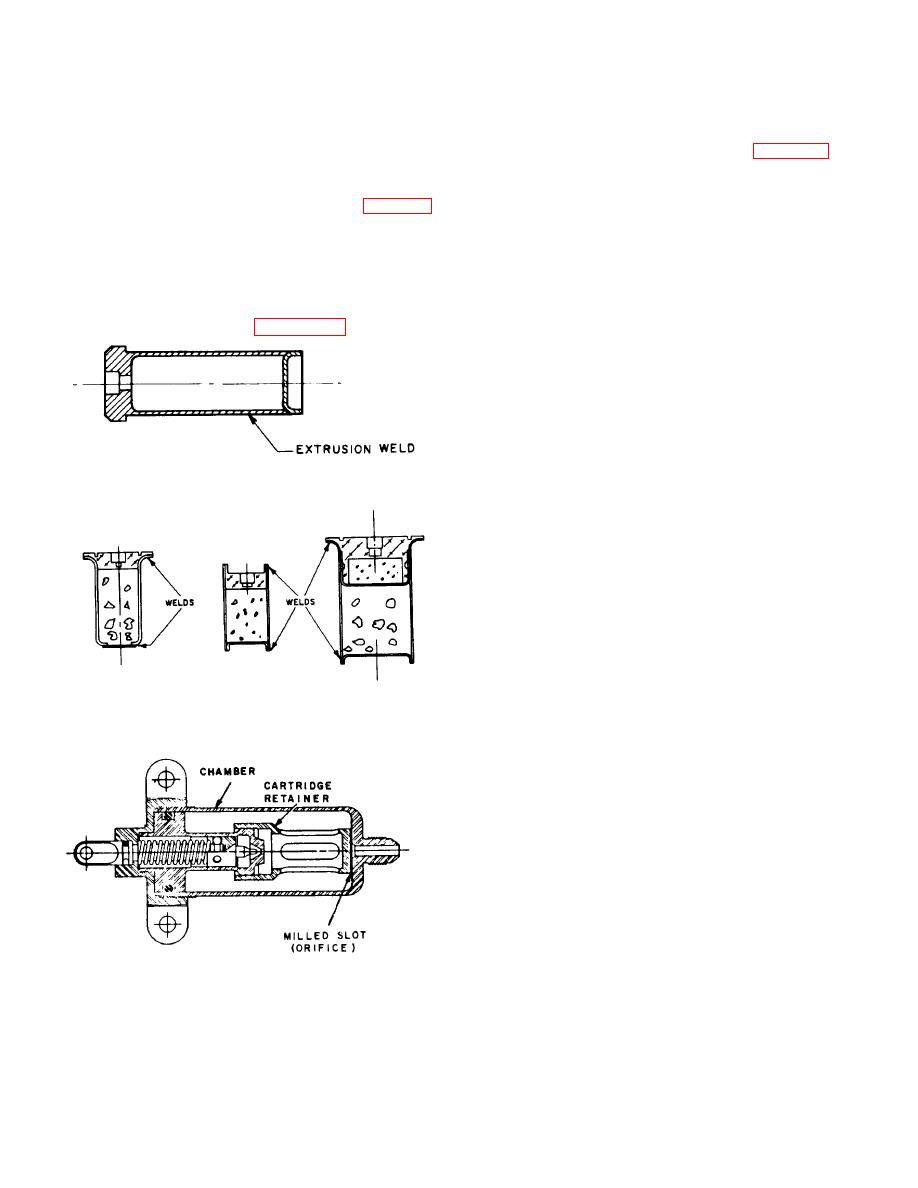
38. Body and Chamber. a. Gas-Generating Devices.
usually is possible to reduce the bending
stresses which occur at the junction of the
(1) The body of a propellant actuated device
cylinder and each closed end by using a
is the enveloping member or housing, and
thick end section and suitable fillets. This
the chamber houses the cartridge. In
is discussed in detail in chapter 6. The
simple propellant actuated devices, such
stresses occurring in gas-generating
as initiators, the body serves as a
devices are triaxial because a longitudinal
chamber as well as the housing.
stress is introduced by the partially or fully
(2) One type of initiator is shown in figure 31.
closed ends.
The cylindrical shape is chosen because it
(3) In some initiators, the cartridge must be
is easy to fabricate.
The physical
supported by a cartridge retainer, since
dimensions are either specified or are
the chamber acts as the body and is
functions of the necessary internal
considerably larger than the cartridge. Tie
volume. Wall thickness is a function of
cartridge retainer fits over the cartridge. It
internal pressure and is calculated as
is cylindrical in shape and has a series of
shown earlier in paragraph 31. It
slots machined in its walls to permit the
cartridge walls to "blow-through" when the
propellant is ignited. The slots in the
retainer serve to contain the burning
propellant and prevent the propellant
grains from being thrown against the
chamber walls and shattered. The base
of the cartridge retainer fits over the exit
Figure 29. Cold welded cartridge
port of the initiator forming a filter. A
series of milled slots in the base of the
cartridge retainer permits the generated
gas to flow through the exit port while
preventing small burning particles of
propellant from passing into the hose or
tubing. Miniature initiators use the body
or chamber as a cartridge retainer and
insert a small filter at the exit port to
prevent the escape of small particles of
propellant. The holes in the filter or the
slots under the cartridge retainer should
have areas which exceed the area of the
Figure 30. Feasible configuration of cartridges with
exit port to prevent their functioning as
lap welds (cold weld type).
flow-restricting orifices.
b. Stroking Devices.
(1) The body design of stroking devices is
similar to that of gas generators, except
that greater strains occur in the absence
of longitudinal stress (undamped-type
stroking devices are subject to biaxial
stresses). In addition, the wall thickness
of the body must not only contain the
internal pressure, but act as a structural
member.
(2) The increase in diameter with pressure
and its effect on sliding fits in the stroking
members must be considered.
In a
Figure 31. Initiator with cartridge retainer.
thruster, the stresses also are complicated
37


